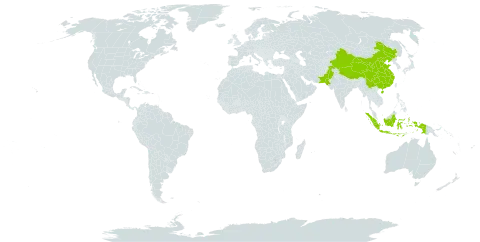Herbs erect. Stems obtusely winged, subglabrous except for pubescent nodes, much branched, nearly finely patent pilose. Petiole 0.4-1 cm, densely fine retrorse pilose; leaf blade ovate, 2.5-5 × 0.5-3 cm, herbaceous, adaxially sparsely strigose, abaxially subglabrous, veins finely pilose, base shallowly cordate to subrotund, margin coarsely crenate, apex acute. Racemes terminal on lateral branches, 10-16 cm. Fruiting pedicel ca. 3 mm, puberulent. Fruiting calyx ca. 4 mm, very sparsely pubescent or subglabrous; scutellum flabellate, ca. 5 mm, slightly reflexed, ciliate. Corolla not seen. Nutlets black-brown, ovoid, ca. 2 × 0.5 mm, tuberculate. Fr. Aug.
